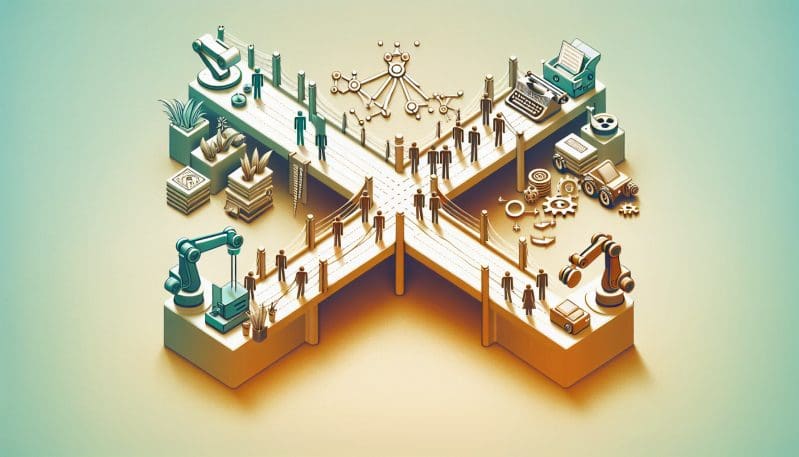Bridging the Digital Divide: Empowering Every Worker in the Automated Economy
- Home
- Bridging the Digital Divide: Empowering Every Worker in the Automated Economy
- Editors Desk
- February 2, 2024
- 0 Comments
In an age where technology is advancing at an unprecedented pace, the term ‘digital divide’ has become more than just jargon—it’s a significant societal issue with profound implications for the future of work, the well-being of workers, and the evolution of workplaces. The digital divide refers to the growing gap between those with access to digital resources and education and those without, particularly affecting the poor, rural, elderly, and handicapped populations. This disparity is not just about connectivity; it’s a matter of economic and social inclusion in an increasingly automated world.
No Worker Left Behind (NWLB) is committed to addressing this critical issue, which is often overlooked in larger forums such as the World Economic Forum, despite affecting a similar demographic. NWLB proposes a multipronged strategy that aims to close this gap and ensure that the benefits of the digital transformation are shared by all. Here’s how:
1. Advocates for Policy and Infrastructure Change:
NWLB recognizes that meaningful change often starts with policy. By influencing local, national, and international policies to prioritize digital infrastructure in underserved areas, NWLB can help bridge the gap in access. Partnerships with government bodies, the private sector, and NGOs can leverage collective resources and expertise to create equitable solutions. Expanding broadband access and offering subsidies for devices are just the starting points for creating a digitally inclusive society.
2. Promotes Digital Literacy and Education:
Digital literacy is now as fundamental as reading and writing. NWLB can lead the charge in making digital education programs widely available, collaborating with educational institutions to embed digital skills in curriculums. Additionally, NWLB can create accessible online courses aimed at reskilling workers for the digital economy, ensuring that no one is left behind as the job market evolves.
3. Supports Workforce Transformation:
As machines take on more tasks, NWLB stands ready to support workers in transitioning into new roles within the digital economy. This involves offering comprehensive resources for training and reskilling, as well as helping businesses to create digitally integrated workplaces that complement human skills rather than replacing them.
4. Champions Inclusive Technology Development:
NWLB advocates for inclusive design in technology to ensure that it’s accessible to all members of society, helping to close the gap in technology usage. The development process must include input from diverse user groups to ensure that innovations meet the needs of a wide audience and do not exacerbate existing inequalities.
5. Fosters Entrepreneurship and Innovation in Marginalized Communities:
By encouraging entrepreneurship in communities that have traditionally been excluded from technological innovation, NWLB can spur economic growth and create new opportunities. Initiatives like incubator programs, microloans, and mentorship connections with tech industry veterans can ignite a spirit of innovation and resilience in these communities.
6. Monitors and Analyzes Trends:
To remain at the forefront of change, NWLB will actively monitor and analyze trends in technology and labor markets. Embracing a think tank approach, NWLB will convene experts to discuss and strategize around evolving challenges and opportunities in the digital landscape.
In conclusion, as we march toward an increasingly automated future, NWLB invites you to join the mission of building a more inclusive society. Advancements in technology have the potential to enhance our lives, but only if we ensure that progress benefits everyone. Join us in the quest to bridge the digital divide and champion a future where no worker is left behind in the age of automation. Together, we can foster inclusive growth that reflects the diversity and potential of our global community.


Leave A Comment